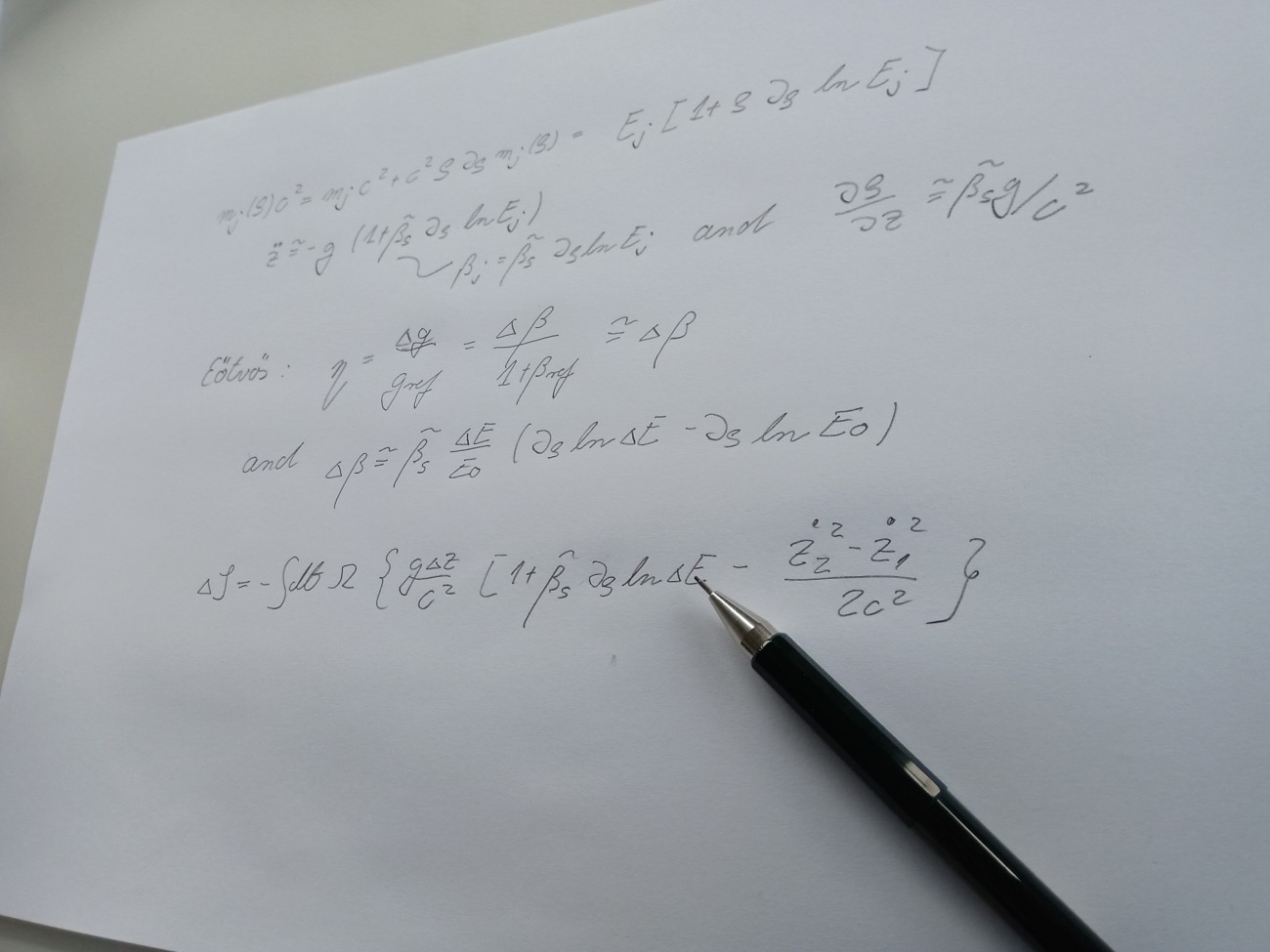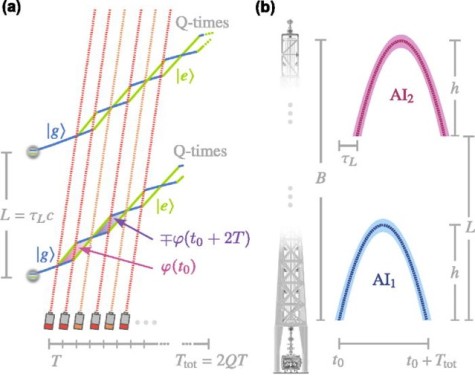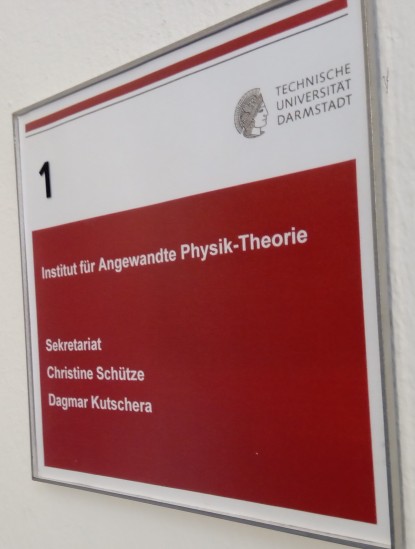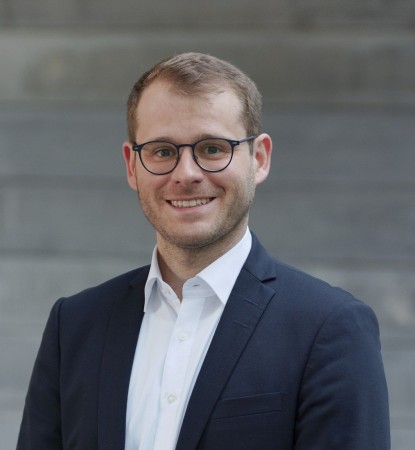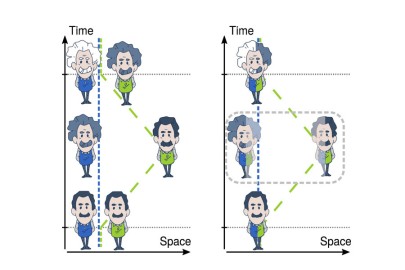
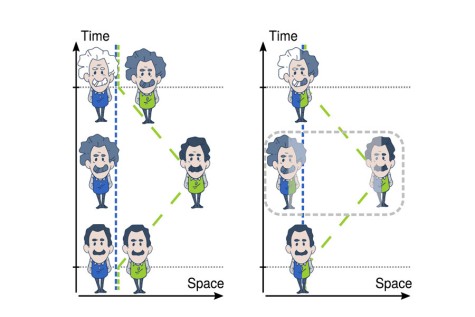
One of the topics of the Theoretical Quantum Optics group is quantum metrology and quantum sensing based on atom interferometers. As a preferred system, we use ultracold quantum gases manipulated with light to move through spacetime in a superposition of two trajectories. Since quantum gases consist of massive atoms, they are particularly sensitive to gravity, which manifests itself through a curvature of that very spacetime.
In our group we study novel approaches to gravimetric sensors guided by electromagnetic fields whose dynamics are governed by quantum mechanical effects, such as quantum tunneling. Microgravity environments, of interest for various projects and missions of the German Aerospace Center (Deutsches Zentrum für Luft- und Raumfahrt), represent another major field of application for such sensors.
The precision of conventional sensors is currently limited by shot noise and depends on the finite number of atoms. However, if so-called entangled quantum states are created between the atoms, this limitation can be overcome and consequently the precision can be increased. For this reason, we explore ways to make entanglement useful for atom interferometry.
As an additional approach that pursues more fundamental aspects, we exploit the fact that quantum gases consist of atoms that have an internal structure. Central to these efforts is the question of how the fundamental principles of general relativity (and thus gravity) can be verified by atom-interferometric sensors with internal atomic structure. This requires consistent models that go beyond the Standard Model.
Recent Developments in Large Scale Quantum Detectors
Atom interferometry is a rapidly evolving field at the interface of applications and fundamental physics. Already today, some setups are exceeding the dimensions of table-top experiments. Even larger quantum sensors on the 100 or 1000-meter scale are envisioned to complement existing gravitational-wave detectors or the ongoing quest for dark matter. The Theoretical Quantum Optics group at TU Darmstadt together with its partners is actively contributing to these efforts. A workshop promoting this topic to gather institutional support for international projects and collaborations within the field resulted in a review article and a dedicated special issue, to which we contributed several articles. In this context, we have studied the atom-optical manipulation of the atoms in such devices, compared different designs of dark-matter detectors, and developed ideas how to optimally exploit the dimensions of the planned detectors. Our ideas have been highlighted by a short popular-science article in Scilight 2024, 041108 (2024) and are featured as Editor’s Pick by AVS Quantum Science.

